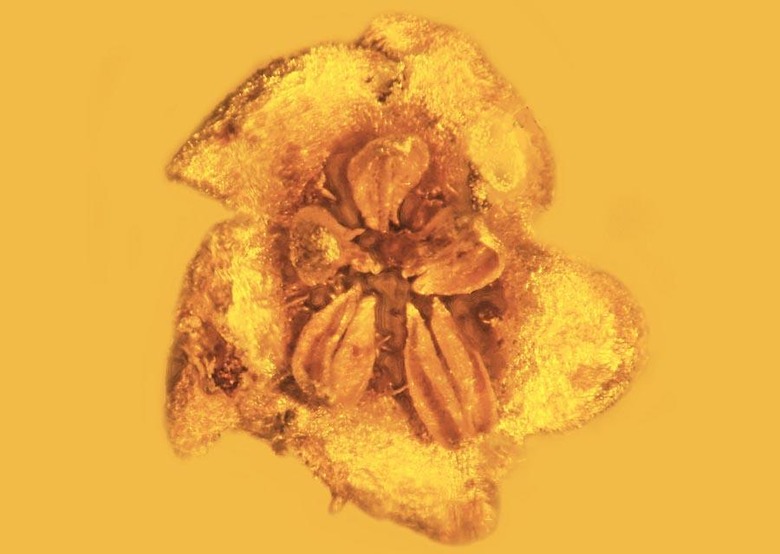Ancient asterid flowers found fossilized in amber
A pair of ancient asterids have been found fossilized in a piece of amber, researchers have revealed. This marks the first instance of an asterid — a type of flower — being found in a fossilized state. Researchers describe the flower as being "perfectly preserved" as a fossil, and they say it was probably poisonous as it comes from the genus Strychnos. The fossils are estimated to be between 20 and 30 million years old.
The discovery was recently detailed by Oregon State University. Said university researcher George Poinar Jr.:
The specimens are beautiful, perfectly preserved fossil flowers, which at one point in time were borne by plants that lived in a steamy tropical forest with both large and small trees, climbing vines, palms, grasses and other vegetation. Specimens such as this are what give us insights into the ecology of ecosystems in the distant past. It shows that the asterids, which later gave humans all types of foods and other products, were already evolving many millions of years ago.

Asterids are a particular family of flowering plants to which humans have a lot of be thankful for — and cautious about. The plants paved the way for the coffee, tomatoes, and tobacco we enjoy today, among other things. Part of the family, though, the part this fossilized flower is from, is also responsible for some terribly deadly poisons.
These poisons have found use throughout human existence, having been used on things like the tip of blow gun darts and in poison used to kill off pests. There are about 80,000 asterid species comprising 98 families and 10 orders. This genus is responsible for the poisons curare and strychnine, and thanks the fossilized flowers' existence, researchers know these toxic plants dotted the landscape before humans.
It isn't clear which Strychnos species these particular flowers come from, nor what it would have been capable of. The university doesn't detail where this piece of amber — and the flowers inside — were discovered. However, researchers might come to find similar plants that evolved during that period of time, the late cretaceous, in similar conditions.
SOURCE: Oregon State University
